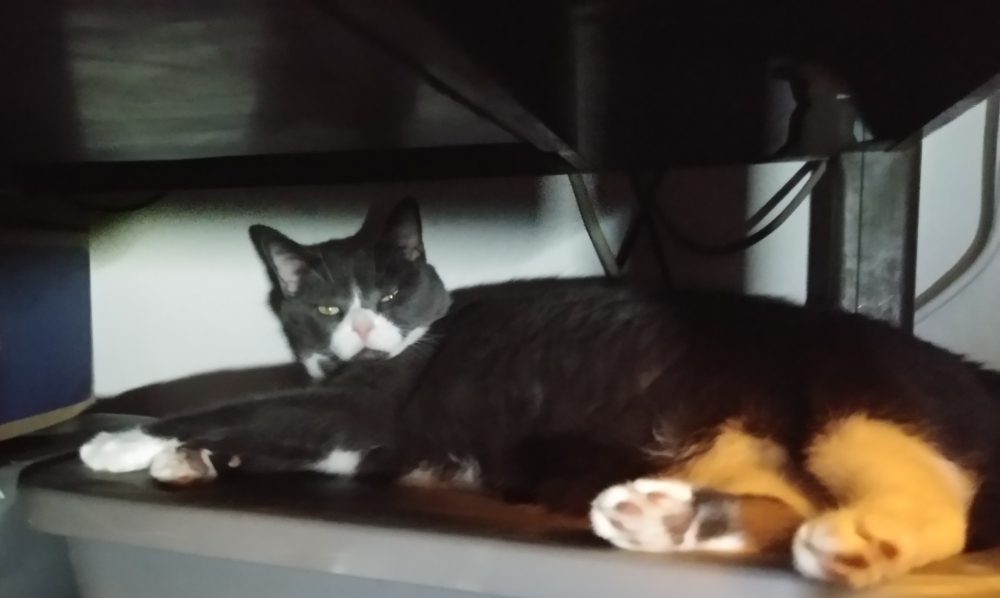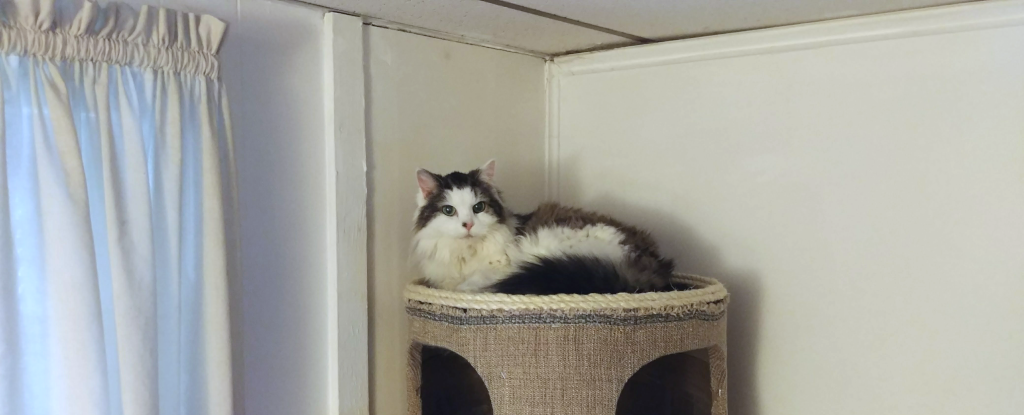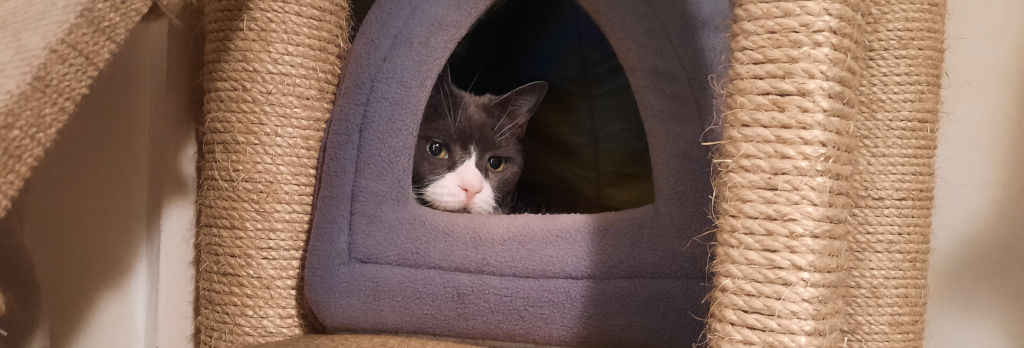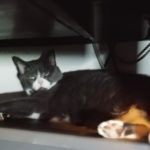 As cats enter their golden years, typically around age 11-12, their relationship with rest and solitude undergoes a profound transformation. Senior cats like Belle and Paws spend significantly more time sleeping—often 18-20 hours daily compared to the 12-16 hours of their younger counterparts.
As cats enter their golden years, typically around age 11-12, their relationship with rest and solitude undergoes a profound transformation. Senior cats like Belle and Paws spend significantly more time sleeping—often 18-20 hours daily compared to the 12-16 hours of their younger counterparts.
This increased need for rest isn’t laziness but a biological necessity as aging bodies require more recovery time.
The Changing Needs of Aging Felines
Senior cats seek hiding places for several age-specific reasons:
- Arthritis and joint pain make comfortable, undisturbed rest more crucial
- Diminished sensory abilities can make ordinary household noises overwhelming
- Cognitive changes may increase anxiety about environmental changes
- Temperature regulation becomes more difficult, making warm, draft-free hideaways essential
Belle’s preference for the back of the storage area illustrates this perfectly. The enclosed space provides warmth, darkness, and isolation from the household’s hustle—all increasingly precious commodities to her aging system.
When Illness Becomes More Complex
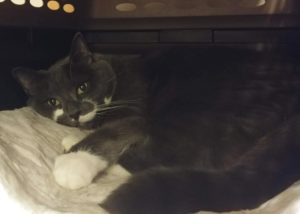 For senior cats, hiding during illness takes on additional significance. While all cats naturally conceal weakness, older felines face more complex health challenges that make this behavior both more common and more concerning.
For senior cats, hiding during illness takes on additional significance. While all cats naturally conceal weakness, older felines face more complex health challenges that make this behavior both more common and more concerning.
Paws had developed several conditions related to digestive and blood pressure that occasionally leaves him feeling unwell. During these episodes, his retreat to his carrier (which we leave open for him) signals not just the usual feline stoicism but a deeper need for undisturbed recovery. The soft pads against his aging body helps regulate comfort him while the openness regulates his temperature while the quiet darkness reduces sensory input that might otherwise tax his limited energy reserves.
Monitoring hiding behavior becomes especially crucial in senior cats because:
- Age-related illnesses often progress subtly before becoming acute
- Older cats have fewer physiological reserves to combat illness
- Many senior cat conditions respond better to early intervention
- Dehydration, a common concern in hiding cats, affects seniors more severely
The balance between respecting a senior cat’s need for peaceful recovery and ensuring timely medical care requires particularly careful attention. A good rule of thumb: any hiding that lasts more than 12 hours in a senior cat warrants a closer look at other symptoms and potentially a veterinary consultation.
Emotional Sanctuary in Changing Times
 As cats age, their emotional resilience often diminishes. Changes that a younger cat might adapt to quickly—a new piece of furniture, visiting relatives, or schedule disruptions—can trigger prolonged anxiety in seniors. This emotional vulnerability makes hiding spots not just preferences but necessities for their psychological wellbeing.
As cats age, their emotional resilience often diminishes. Changes that a younger cat might adapt to quickly—a new piece of furniture, visiting relatives, or schedule disruptions—can trigger prolonged anxiety in seniors. This emotional vulnerability makes hiding spots not just preferences but necessities for their psychological wellbeing.
Belle’s behavior during the recent holiday season demonstrated this perfectly. While she once tolerated the festive chaos, this year found her retreating to her hideaway for hours at a stretch, emerging only when the household settled into evening quiet. This wasn’t rejection but self-preservation—a wise management of her more limited emotional energy.
For senior cats, emotional hiding spaces provide:
- Essential sensory breaks from overwhelming stimuli
- Safe processing time for environmental changes
- Controlled social engagement on their terms
- Refuges during confusing episodes (important for cats with cognitive decline)
Creating predictable, accessible emotional retreats helps senior cats navigate their changing relationship with the world. It can be as simple as a cardboard box lined with a familiar blanket, positioned in a quiet corner, can mean the difference between chronic stress and comfortable aging.
The Medication Challenge: Working With Rather Than Against
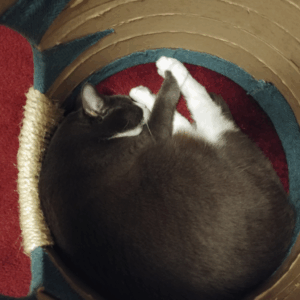 Most senior cats eventually need some form of regular medication or treatment. Paw’s thyroid condition requires twice-daily pills, while Belle receives subcutaneous fluids for her kidney disease. Their extraordinary ability to anticipate these interventions and disappear accordingly demonstrates not failing memory but remarkably intact pattern recognition.
Most senior cats eventually need some form of regular medication or treatment. Paw’s thyroid condition requires twice-daily pills, while Belle receives subcutaneous fluids for her kidney disease. Their extraordinary ability to anticipate these interventions and disappear accordingly demonstrates not failing memory but remarkably intact pattern recognition.
Rather than engaging in increasingly elaborate “cat hunts” before medication time, success lies in working with their natural behaviors. Some approaches particularly suited to senior cats include:
- Establishing medication routines during times they typically aren’t hiding
- Creating special “treatment rooms” with positive associations where medication happens predictably
- Using food motivation (often stronger in seniors who experience taste changes)
- Providing a preferred hiding spot immediately after treatment as a reward
When Belle receives her thyroid medication immediately before breakfast in the same kitchen spot daily, the routine has become so predictable that her resistance has diminished. The predictability itself provides comfort to her senior sensibilities, which increasingly favor consistent patterns.
Territorial Security: Even More Essential for Seniors
In multi-pet households, senior cats like Paws face unique challenges maintaining their territorial boundaries. Younger cats or dogs may not recognize or respect the more subtle dominance signals from an aging cat. Dedicated hiding spaces become crucial diplomatic tools in these complex pet relationships.
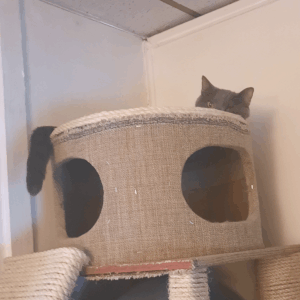 Paws has claimed the guest bedroom cat tree upper tower as his exclusive domain. This territory-within-territory allows him to remain part of the household while establishing clear boundaries that the other animals instinctively respect.
Paws has claimed the guest bedroom cat tree upper tower as his exclusive domain. This territory-within-territory allows him to remain part of the household while establishing clear boundaries that the other animals instinctively respect.
For senior cats in multi-pet homes, proper hiding options provide:
- Non-confrontational ways to establish boundaries
- Essential recovery space from play they can no longer participate in
- Quiet zones when younger animals become too boisterous
- Safe feeding locations when mobility or competition becomes challenging
These spaces prevent the stress that might otherwise arise from territorial disputes, allowing senior cats to maintain their status without physical confrontations they’re increasingly less equipped to handle.
Creating Age-Appropriate Hiding Havens
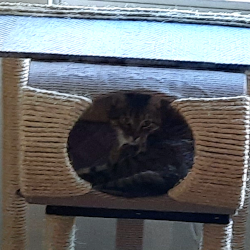 Standard cat furniture often fails to address the specific needs of senior felines. The tall cat trees that once delighted them may become inaccessible as joint pain and reduced confidence in jumping develop. Creating senior-specific hiding options requires thoughtful adaptation.
Standard cat furniture often fails to address the specific needs of senior felines. The tall cat trees that once delighted them may become inaccessible as joint pain and reduced confidence in jumping develop. Creating senior-specific hiding options requires thoughtful adaptation.
Ideal hiding spaces for older cats incorporate these elements:
- Easy accessibility with no challenging jumps or climbs
- Soft, pressure-relieving bedding to ease arthritic joints
- Slightly elevated sides for a sense of security without complete enclosure
- Temperature options—some warmer for cold days, others cooler for hot weather
- Multiple entrance/exit points for cats with reduced mobility
DIY projects particularly suited to senior cats include converting lower cabinets with removed doors into cozy nooks, repurposing footstools with added side panels as mini-caves, or creating window-adjacent resting platforms at accessible heights as shown here with Seamus.
A particularly successful project for Belle involved transforming an unused under bed drawer. With its drawer removed and replaced with a blanket, the bed’s interior became her favorite resting spot—easily accessible, partially enclosed for security, yet allowing her to monitor household activity through the open front.
For those preferring ready-made options, senior-specific cat furniture has emerged on the market. Look for features like ramps instead of ladders, wider platforms for unsteady positioning, and hideaways positioned at heights achievable with minimal jumping.
Respecting the Wisdom in Withdrawal
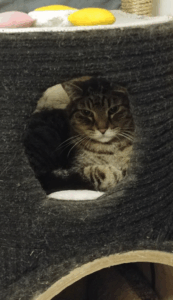 Perhaps most importantly, understanding a senior cat’s hiding behaviors means recognizing the wisdom in their choices. When Belle seeks solitude, she’s not rejecting companionship but practicing the self-knowledge that comes with age. Her retreats represent sophisticated self-care that deserves respect.
Perhaps most importantly, understanding a senior cat’s hiding behaviors means recognizing the wisdom in their choices. When Belle seeks solitude, she’s not rejecting companionship but practicing the self-knowledge that comes with age. Her retreats represent sophisticated self-care that deserves respect.
The greatest gift we can offer our aging feline companions is acknowledgment of their changing needs. By providing appropriate hiding options, monitoring what their seclusion might signal, and creating environments that honor their need for both connection and solitude, we extend not just their lifespans but their quality of life.
In those quiet moments when you glimpse Belle contentedly curled in her chosen sanctuary, you’re witnessing not disconnection but the specialized care aging cats provide themselves—if only we create the spaces that allow them to do so.
It’s also important to note that in an ever changing environment, you can expect their preferred spots to change along with it. Some cats rediscover old spots or make up entirely new spots. The important thing is to keep their alone time in mind if you remove one of their hiding places and make new ones for them.
This is why cat trees can be an important part of the household. These spots may move but they are not truly gone, just in another location. Some cats take very well to a new location of the tree. When we relocate a tree, we try and keep it in a spot that can oversee the room so the cats can keep an eye on things at all times. They’re not always sleeping… sometimes they’re just resting.


